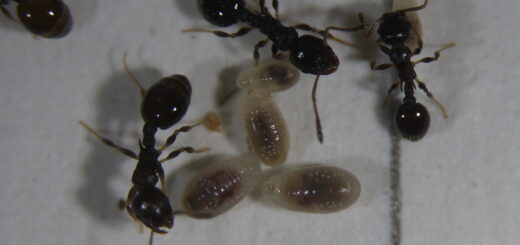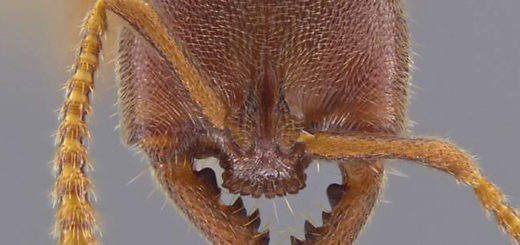The Ant Chromosome database – ACdb: an online resource for ant chromosome researchers
Ants are diverse insects exhibiting astonishing variation in chromosome number and structure. Their haploid chromosome numbers range from n = 1 to n = 60 and include diverse karyotypes. However, so far, ant chromosome numbers have been only sporadically documented and assembled. In their recently published paper in Myrmecological News, Danon C. Cardoso, Haroldo G. Santos, and Maykon P. Cristiano present the Ant Chromosome database (ACdb). It is an online tool for rapid access to data regarding ant karyology. Cléa Mariano highlights their main points.
A Review compiled by Cléa dos Santos Ferreira Mariano 
Cytogenetics is a discipline halfway between genetics and taxonomy. It got its nobility letters, in the case of the Formicidae, thanks to the studies of the Australian Ross Crozier and the Japanese Hirotami Imai from 1960 to the early 21st century that applied Imai’s Minimum Interaction Theory. Numerous studies on ant karyotypes are continuously made around the world, but the most focused work on ant cytogenetics is currently being done by teams in Spain and Brazil.
With more than 13,000 species known, the family Formicidae is one of the cytogenetically better studied in the order Hymenoptera with 520 species with cytogenetic data. However, the quality of the information available is rather irregular. For example, older publications often provided information on chromosome numbers only, and publications were often poorly illustrated. They rarely allow for a current reassessment of chromosome structure from a comparison of metaphase or karyotype original images to the information available today. Further, there are two distinct nomenclatures used to study the chromosomes of the ants: Levan & al. (1964) and Imai (1991). As pointed out in the study by Cardoso & al. (2018), this can generate some confusion between cytogeneticists. Moreover, specific markers of certain regions of the chromosomes (the various banding techniques, including those currently used in molecular cytogenetics, e.g., Palomeque & al. 1988, Hirai & al. 1996) have been used very unequally for ants during the past 20 years by the cytogeneticist community.
As pointed out in the article, various compilations of cytogenetic data published for the Formicidae are available. However, we truly welcome the initiative of the authors to build an online digital database. It will certainly contribute to streamlining information and increasing the quality of the analysis of ant karyotypes worldwide for structural studies on chromosomes and for shedding light on the evolution of the whole family Formicidae. It is also worth mentioning the possibility of approaching the diversity of the group through the proposals of integrative taxonomy (Schlick-Steiner & al. 2010) or to differentiate cryptic species whose existence is increasingly evident in a wide variety of zoological groups (Bickford 2006), including ants (Mariano & al. 2012). Recent studies show that cytogenetics will contribute evidence regarding the evolution of apparently close or convergent groups of ants (Cristiano & al. 2013). The digital database will allow constant updating of the cytogenetic information (e.g., banding) and of the nomenclature data for a taxon that has already been studied [e.g., we now know that Camponotus (Myrmobrachys) sp. in Mariano & al. 2001, p.271, is in fact Camponotus textor Forel, 1899. This information, which has not been corrected so far, is easy to update in an online database as proposed. It will also be possible to add information on new populations studied in species whose karyotype has already been described. Finally, it would be desirable in the future that the ACdb provide links to capture the PDFs of the cited references (many “classic” studies, although they have fallen into the public domain, are rather difficult to find) as well as images of metaphases and karyotypes of the listed taxa.

Metaphase of Neoponera villosa, Ponerinae, 2n = 34. © Cléa dos Santos Ferreira Mariano
References
Bickford, D., Lohman, D.J. , Sodhi, N.S., Ng, Peter K.L., Meier, R., Winker, K., Ingram, K.K. & Das, I. 2006: Cryptic species as a window on diversity and conservation. – Trends in Ecology & Evolution 22: 148-155.
Cristiano, M.P, Cardoso, D.C. & Fernandes-Salomão, T.M. 2013: Cytogenetic and molecular analyses reveal a divergence between Acromyrmex striatus (Roger, 1863) and other congeneric species: taxonomic implications. – Public Library of Science One 8: art. e59784.
Hirai, H., Yamamoto, M.-T., Taylor, R.W. & Imai, H.T. 1996: Genomic dispersion of 28S rDNA during karyotypic evolution in the ant genus Myrmecia (Formicidae). – Chromosoma 105: 190-196.
Imai, H.T. 1991: Mutability of constitutive heterochromatin (C-bands) during eukaryotic chromosomal evolution and their cytological meaning. – Japanese Journal of Genetics 66: 635-661.
Levan, A., Fredga, K. & Sandberg, A. 1964: Nomenclature for centromeric position on chromosomes. – Hereditas 52: 201-220.
Mariano, C.S.F., Pompolo, S.G., Delabie, J.H.C. & Campos, L.A.O. 2001: Estudos cariotípicos de algumas espécies neotropicais de Camponotus Mayr (Hymenoptera, Formicidae). – Revista Brasileira de Entomologia 45: 267-274.
Mariano, C.S.F., Pompolo, S.G., Silva, J.G. & Delabie, J.H.C. 2012: Contribution of cytogenetics to the debate on the paraphyly of Pachycondyla spp. (Hymenoptera, Formicidae, Ponerinae). – Psyche 2012: art. 973897.
Palomeque, T., Chica, E., Cano, M.A. & Díaz De La Guardia, R. 1988: Karyotypes, C-banding, and chromosomal location of active nucleolar organizing regions in Tapinoma (Hymenoptera, Formicidae). – Genome 30: 277-280.
Schlick-Steiner, B.C., Steiner, F.M., Seifert, B., Stauffer, C., Christian, E. & Crozier, R.H. 2010: Integrative taxonomy: a multisource approach to exploring biodiversity. – Annual Review of Entomology 55: 421-438.





Question #1 how many chromosomes does ant cell contain? Thank you.
An ant cell contain from 1 (male Myrmecia pilosula) to120 (female Dinoponera lucida) chromosomes